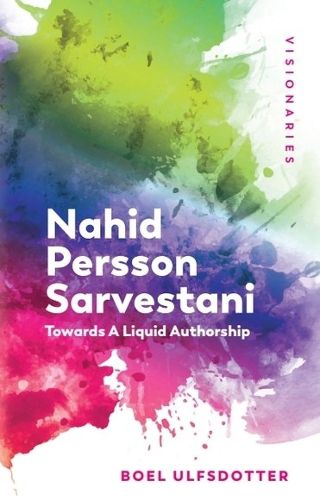Readings Newsletter
Become a Readings Member to make your shopping experience even easier.
Sign in or sign up for free!
You’re not far away from qualifying for FREE standard shipping within Australia
You’ve qualified for FREE standard shipping within Australia
The cart is loading…






This monograph offers a critical study of Nahid Persson Sarvestani's documentary practice across three decades. Highlighting the filmmaker's at times limited opportunities to record visible evidence in situ, the book frames her involvement with new documentary film technology and its influence on her practice. From a discursive point of view, Boel Ulfsdotter introduces the concept liquid authorship to position Persson Sarvestani's work by sparring the films' production history against different iterations of post-millennium documentary theory. In a bid to move the boundaries of traditional documentary forward, the author also studies how Persson Sarvestani applies first-person filmmaking in relation to the subject of documentary, including the relationship between director and enunciator.
The filmmaker's documentary output is reflected against the tenets of feminist theory. To establish their discursive urgency, Boel Ulfsdotter unpicks the films' fabric to comment on their aesthetic merits, narrative composition, including the impact of voice-over, vis--vis contemporary documentary practice.
$9.00 standard shipping within Australia
FREE standard shipping within Australia for orders over $100.00
Express & International shipping calculated at checkout
This monograph offers a critical study of Nahid Persson Sarvestani's documentary practice across three decades. Highlighting the filmmaker's at times limited opportunities to record visible evidence in situ, the book frames her involvement with new documentary film technology and its influence on her practice. From a discursive point of view, Boel Ulfsdotter introduces the concept liquid authorship to position Persson Sarvestani's work by sparring the films' production history against different iterations of post-millennium documentary theory. In a bid to move the boundaries of traditional documentary forward, the author also studies how Persson Sarvestani applies first-person filmmaking in relation to the subject of documentary, including the relationship between director and enunciator.
The filmmaker's documentary output is reflected against the tenets of feminist theory. To establish their discursive urgency, Boel Ulfsdotter unpicks the films' fabric to comment on their aesthetic merits, narrative composition, including the impact of voice-over, vis--vis contemporary documentary practice.